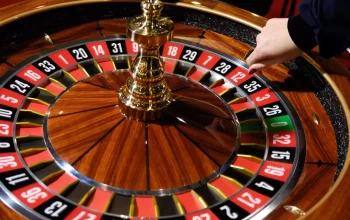A roulette wheel is a solid wooden disk with metal partitions or frets lining it. The 36 compartments are alternately red and black. The 37th contains a sign 0 for the American version. The French version has two green pockets with 00 and ‘0’. These two differences make the wheels appear random to the average person. But understanding the way the numbers are distributed on a roulette wheel is essential to smart play.
Roulette wheels have defects and imperfections in their design, which can change the outcome. Moreover, the defect may affect the wheel’s balance. This can happen due to normal wear and tear or a manufacturing defect. A defect can cause the wheel to tilt or be imbalanced. Regardless of the cause, the defects in the design will influence the outcome. To maximize your chances of winning, look for cracks, unevenness, and slants in the ball track.
A high-quality roulette wheel has a low-profile fret. The lower profile frets allow the ball to move easily and avoid the pocket. In contrast, a low-profile fret makes it difficult to predict where the ball will land, making it less reliable. This is especially important in older wheels. Some roulette wheels are pre-designed with high frets. These low-profile wheels are known to be random, but there are other factors that must be considered.
A low-cost roulette wheel may contain needle bearings or a simple, circular ball-bearing mechanism. This mechanism is known as a cone, and serves to help the spinning ball return to the pockets. In addition to the pockets, a roulette wheel has a cone that is attached to the center. A good quality roulette wheel has a diameter of about 20 inches. There are even cheap wheels with a small needle bearing.
While each roulette wheel is unique, there are also slight differences between each wheel. The low numbers on the American wheel are more likely to fall on the ‘0’ row, while the high numbers on the European wheel have more chances of landing on a high number. Nonetheless, a high-end roulette wheel should not contain too many consecutive low and high-end pockets. The same goes for the other sides of the wheel. The Cammegh wheel is a popular choice for a casino.
A roulette wheel with a high-quality ball tack is much more accurate and reliable than one without. In fact, the latest versions of this table have no lip, and the ball will usually land on a pocket that is slightly ahead of the previous one. A roulette wheel with a deep pocket is a better bet than one with a shallow one. A wheel with a low-quality ball tacks is better for players than a high-quality, low-cost roulette.








